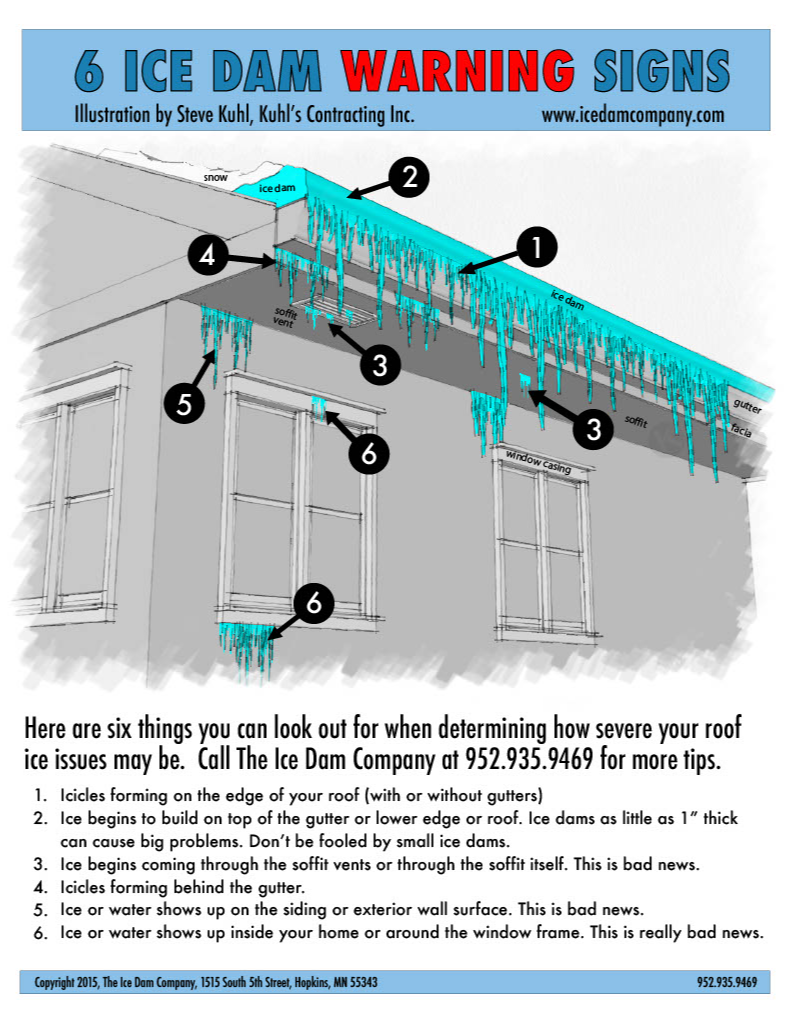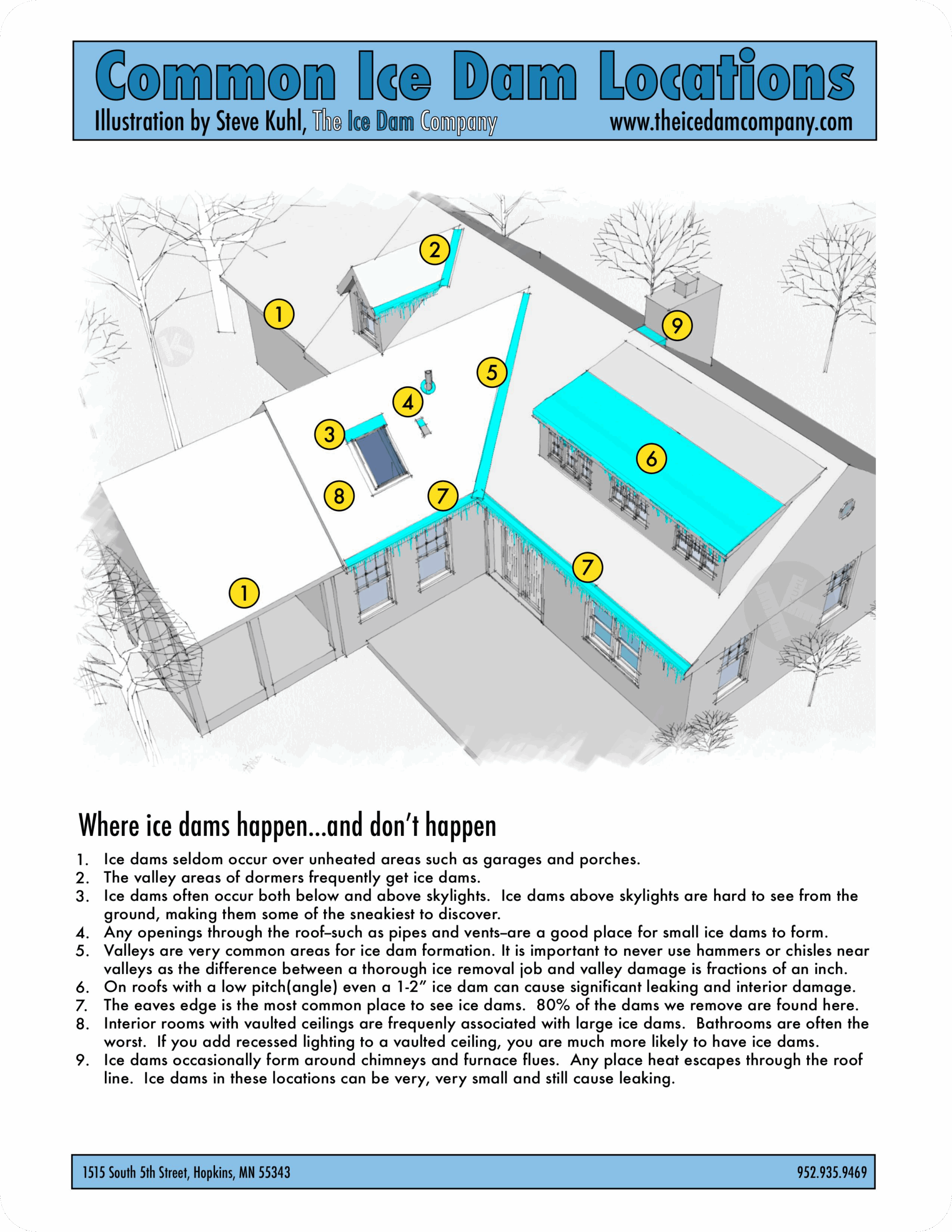The Problem with Ice Dams
When ice dams form on a roof, homeowners have very few safe options to remove them. Many try to chop at the ice with hammers or axes, but mechanical methods almost always result in roof damage. Over the years, we’ve seen hundreds of roofs scarred by well-intentioned people trying to remove ice dams with tools never meant for the job. The most common forms of damage are cuts, bruises, and perforations of the roofing material and holes punched in valley metal.






